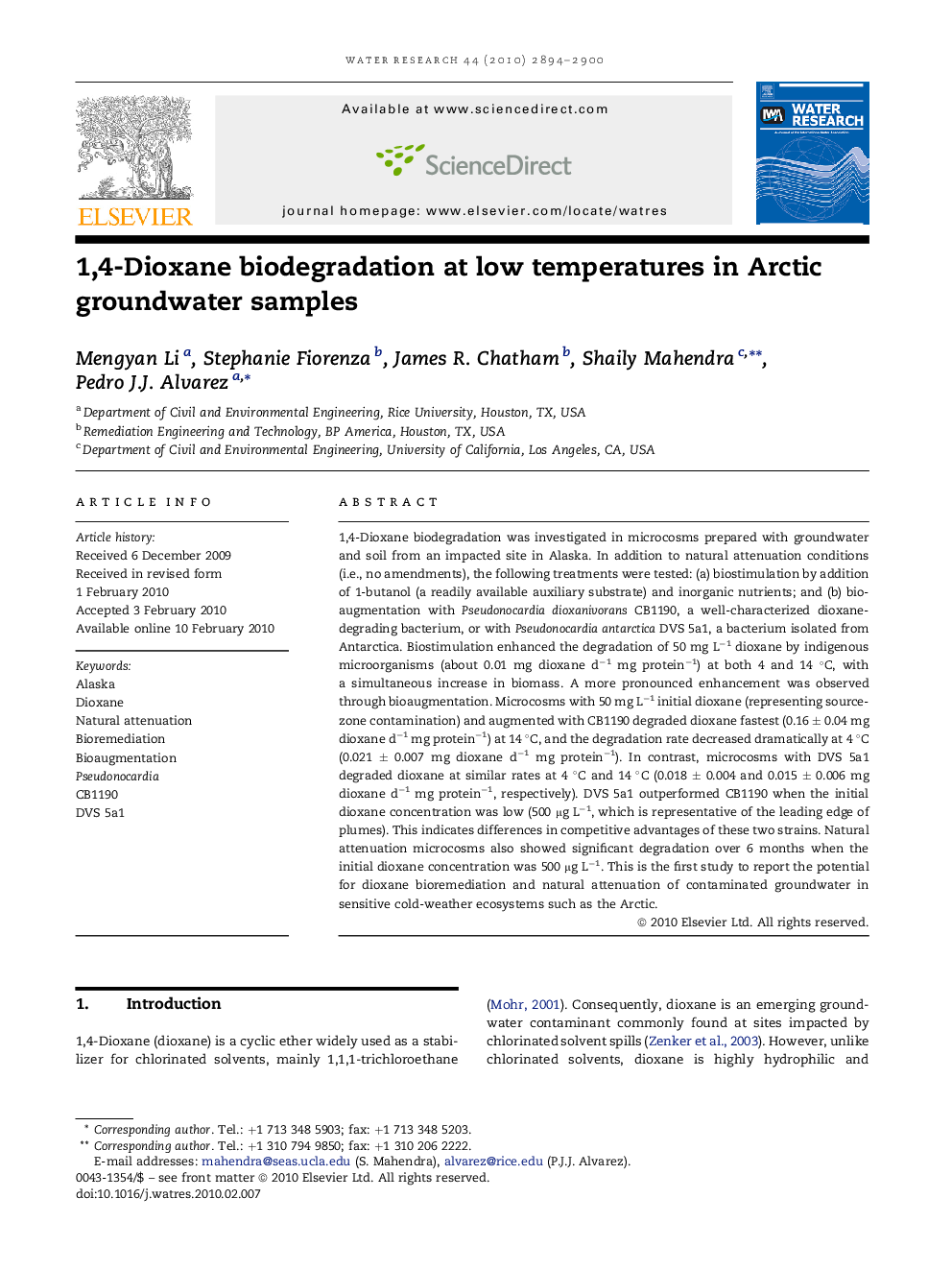| Article ID | Journal | Published Year | Pages | File Type |
|---|---|---|---|---|
| 4484226 | Water Research | 2010 | 7 Pages |
1,4-Dioxane biodegradation was investigated in microcosms prepared with groundwater and soil from an impacted site in Alaska. In addition to natural attenuation conditions (i.e., no amendments), the following treatments were tested: (a) biostimulation by addition of 1-butanol (a readily available auxiliary substrate) and inorganic nutrients; and (b) bioaugmentation with Pseudonocardia dioxanivorans CB1190, a well-characterized dioxane-degrading bacterium, or with Pseudonocardia antarctica DVS 5a1, a bacterium isolated from Antarctica. Biostimulation enhanced the degradation of 50 mg L−1 dioxane by indigenous microorganisms (about 0.01 mg dioxane d−1 mg protein−1) at both 4 and 14 °C, with a simultaneous increase in biomass. A more pronounced enhancement was observed through bioaugmentation. Microcosms with 50 mg L−1 initial dioxane (representing source-zone contamination) and augmented with CB1190 degraded dioxane fastest (0.16 ± 0.04 mg dioxane d−1 mg protein−1) at 14 °C, and the degradation rate decreased dramatically at 4 °C (0.021 ± 0.007 mg dioxane d−1 mg protein−1). In contrast, microcosms with DVS 5a1 degraded dioxane at similar rates at 4 °C and 14 °C (0.018 ± 0.004 and 0.015 ± 0.006 mg dioxane d−1 mg protein−1, respectively). DVS 5a1 outperformed CB1190 when the initial dioxane concentration was low (500 μg L−1, which is representative of the leading edge of plumes). This indicates differences in competitive advantages of these two strains. Natural attenuation microcosms also showed significant degradation over 6 months when the initial dioxane concentration was 500 μg L−1. This is the first study to report the potential for dioxane bioremediation and natural attenuation of contaminated groundwater in sensitive cold-weather ecosystems such as the Arctic.
